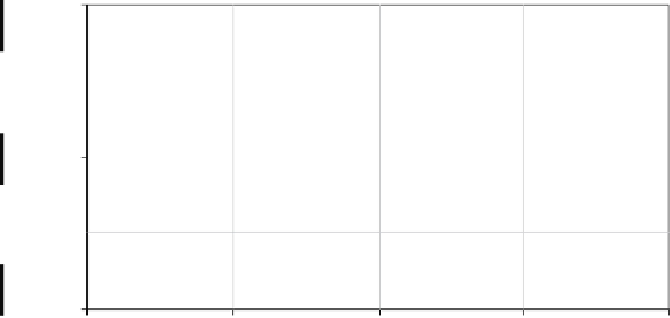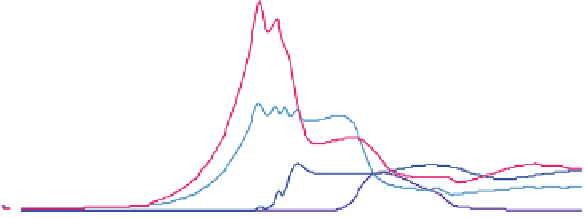Database Reference
In-Depth Information
1: ADULTS D1
2: ADULTS D2
3: ADULTS H1
4: ADULTS H2
1:
6.00
2:
3:
4:
1:
2:
3.00
4
3:
4:
3
4
4
1:
2
3
2
2:
3
3:
1
1
4
2
3
1
2
1
4:
0.00
0
52
104
156
208
Weeks
Fig. 15.5
15.1.1 Questions and Tasks
1. Note how ensuing runs of the model in this chapter—which use the same para-
meters and initial conditions—are significantly different. Why is this difference
occurring?
2. In the model, the diseased insects are at a “disadvantage.” What would you
change (within the realm of the biologically likely) to favor the diseased pop-
ulation?
3. Is it possible that we can provide a more useful means for biological control by
studying insect population dynamics from an ecological perspective? Can you
implement such a control in the model?
4. Introduce additional factors, such as seasonality, into the population model.
DISEASED AND HEALTHY IMMIGRATING INSECTS
ADULTS D1(t)
=
ADULTS D1(t
−
dt)
+
(MATURE D1
+
I R1
−
DEATHS DA1) * dt
INIT ADULTS D1
=
.1
{
Initial diseased adults.
}
INFLOWS:
MATURE D1
=
U1 D * NYMPHS D1
{
Individuals per Time Period
}
I R1
=
INFECTION 1
{
Individuals per Time Period
}
OUTFLOWS:
DEATHS DA1
=
ADULTS D1 * B2 D
{
Individuals per Time Period
}
ADULTS D2(t)
=
ADULTS D2(t
−
dt)
+
(MATURE D2
+
I R2
−
DEATHS DA2) * dt
INIT ADULTS D2
=
.1
{
Initial diseased adults.
}











































